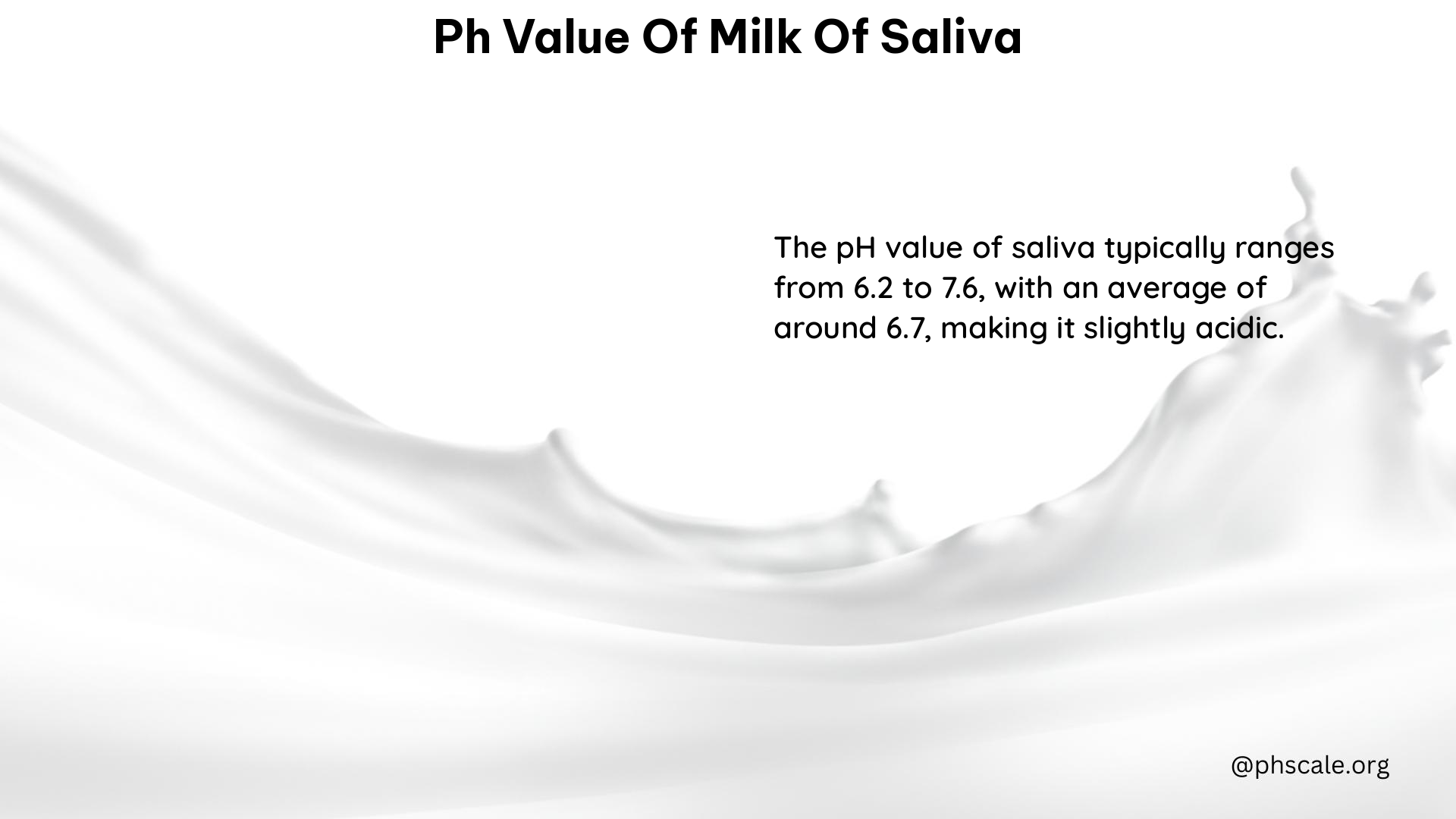The pH value of milk in saliva is a crucial aspect of oral health, as it can impact the overall balance of the mouth’s pH levels. Understanding the normal pH range of saliva, the effect of milk consumption on salivary pH, and the importance of maintaining a balanced pH is essential for promoting dental health.
Normal pH Range of Saliva
The normal pH range for saliva is between 6.2 and 7.6. This range is essential for maintaining a healthy mouth and protecting teeth from demineralization. Saliva plays a vital role in neutralizing acids, remineralizing tooth enamel, and providing a protective barrier against harmful bacteria.
Effect of Milk Consumption on Saliva pH

Consuming milk can affect the pH level of saliva. Studies have shown that the pH value of saliva decreases after drinking milk, particularly when it is sweetened or consumed with cornflakes. For example, the pH value of saliva in children aged 6-12 years decreased from 6.86 to 6.31 after drinking packed cow’s milk. Similarly, a study on children aged 3-5 years found that the salivary pH dropped significantly after consuming sweetened milk.
Acidogenic Potential of Milk
The acidogenic potential of milk is influenced by various factors, including the type of milk and any additives. For instance, milk with sugar and/or cornflakes can lead to a fall in salivary pH, making teeth more prone to dental caries. However, milk itself has a protective effect against dental caries due to its high content of calcium, phosphorous, and casein phosphopeptides.
pH Levels and Dental Health
A pH level below 5.5 in saliva can lead to demineralization of tooth enamel, causing discomfort when consuming hot, cold, or sugary drinks. On the other hand, a pH level above 7.6 can indicate metabolic alkalosis, associated with conditions like adrenal disease and alcohol abuse.
Testing Saliva pH
To test the pH of saliva, pH strips are used. The process involves not eating or drinking for at least two hours, filling the mouth with saliva, and then applying a small amount of saliva to the pH strip. The strip changes color based on the acidity/alkalinity of the saliva, which can be matched to a color chart to determine the pH level.
Maintaining Balanced pH
To maintain a balanced pH in the mouth, it is recommended to consume a variety of foods and drinks with a midrange pH. Avoiding sugary soft drinks and limiting acidic foods can help keep the pH level within the normal range.
Contaminants and Chemicals
Common contaminants and chemicals that can affect saliva pH include:
- Sugars and carbohydrates, which are broken down by bacteria in the mouth, releasing acids that lower the pH level.
- Acidic foods and drinks like soft drinks, white wine, and certain fruits like cherries.
- Substances like cornflakes, which can contribute to a fall in salivary pH when consumed with milk.
Solutions and Alternatives
To maintain a balanced pH in saliva, consider the following solutions and alternatives:
- Drink water regularly to help neutralize the pH level.
- Limit or avoid sugary and acidic foods and drinks.
- Consume milk and dairy products in moderation, as they can have a protective effect against dental caries.
- Use pH strips to monitor saliva pH and adjust dietary habits accordingly.
By understanding the pH value of milk in saliva and taking steps to maintain a balanced pH, individuals can promote overall oral health and prevent dental issues.
References
- Healthline. (2018). pH of Saliva. Retrieved from https://www.healthline.com/health/ph-of-saliva
- Dental and Facial Aesthetics of South Florida. (2021). What Is pH of Saliva? Retrieved from https://dfaesthetics.com/blog/what-is-ph-of-saliva/
- Journal of Drug Delivery and Therapeutics. (2022). View of Differences in Saliva pH before and after Drinking Packed Cow’s Milk in Children Aged 6-12 Years. Retrieved from https://jddtonline.info/index.php/jddt/article/view/5792/5057.
